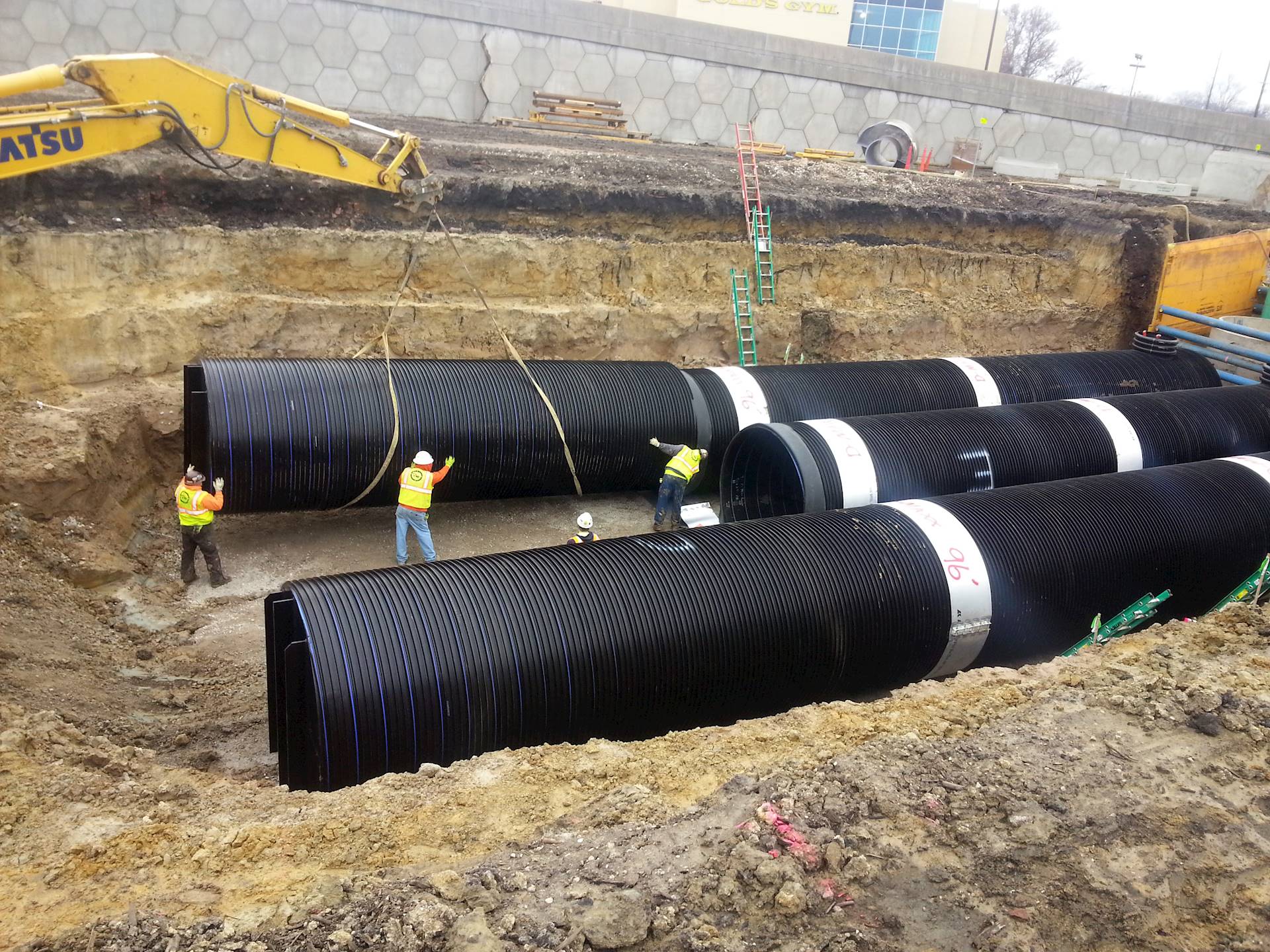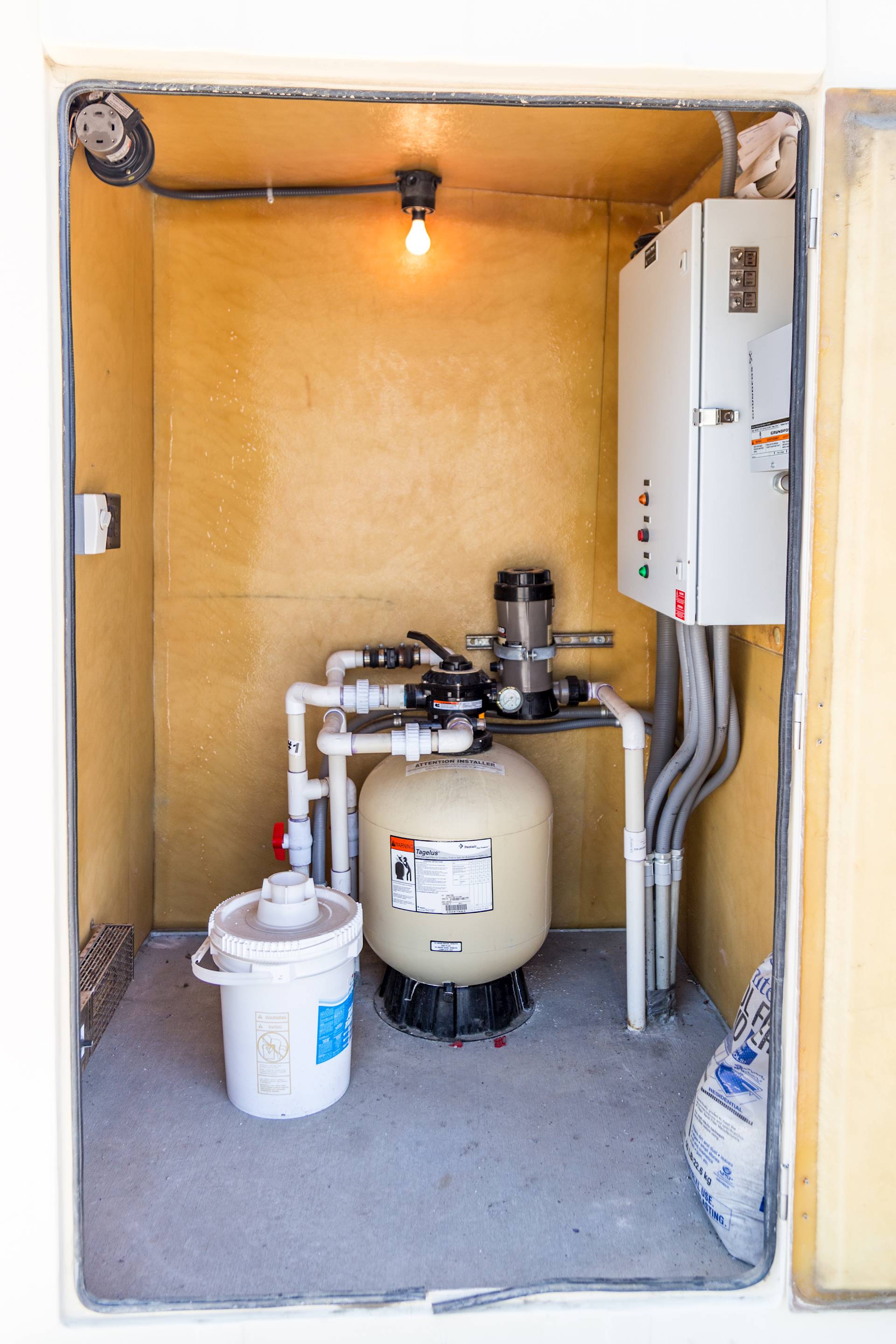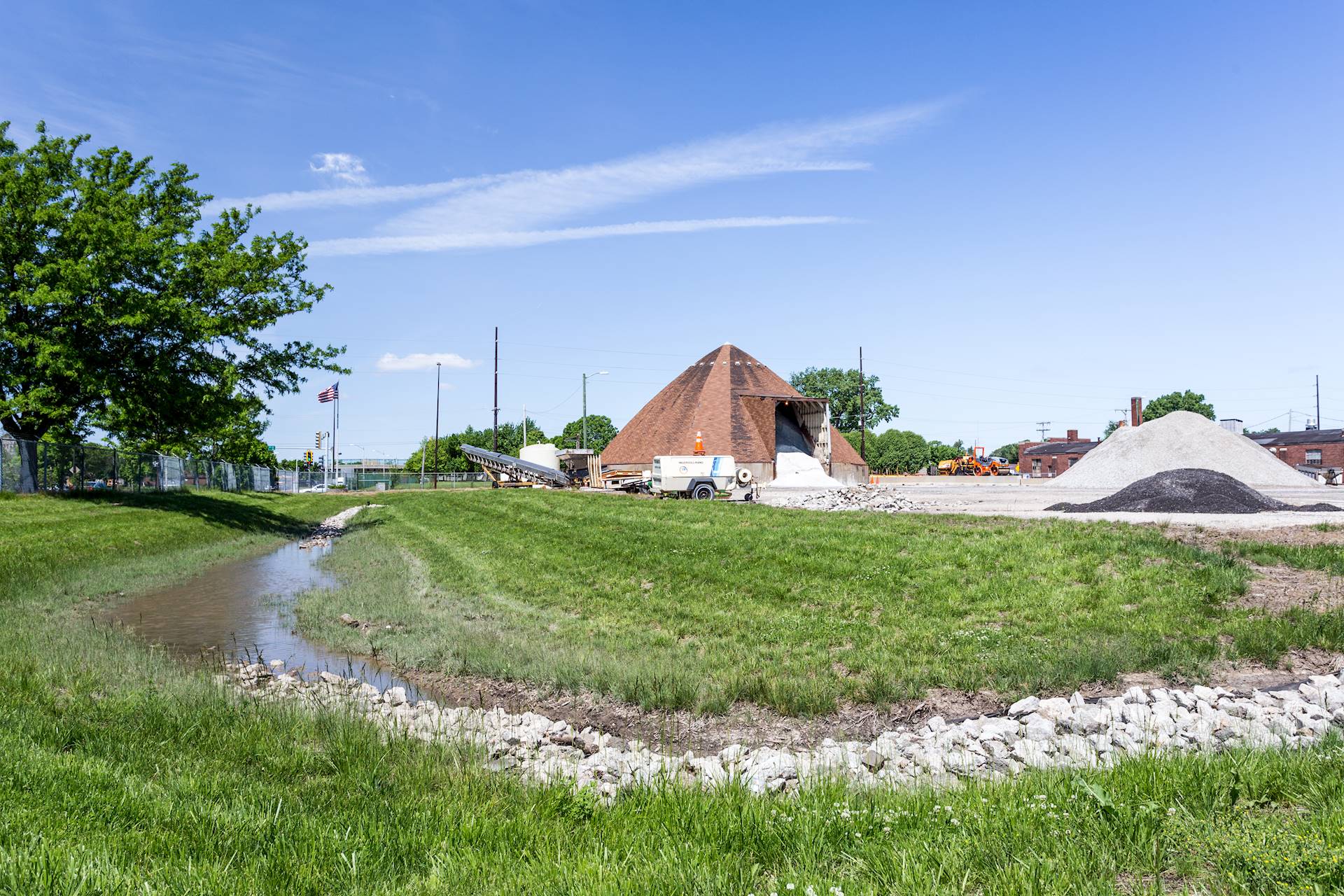 Underground storage pipes are installed for a stormwater system for the city of Springfield, Illinois.
Underground storage pipes are installed for a stormwater system for the city of Springfield, Illinois.
The city of Springfield, Illinois, faced a steep challenge when it came to its sewer garage facility. The site is used for salt storage, aggregate storage, temporary tree and branch storage and to stockpile excess soil. As a result, there were considerable obstacles when it came to stormwater management at the site. The facility has a stormwater collection system that is tied to the city’s combined sewer system.
Hanson approached the city in 2012 regarding the Illinois Environmental Protection Agency’s Illinois Green Infrastructure Grant Program. The program provided grants to communities for combined sewer rehabilitation, stormwater retention and infiltration and small projects related to stormwater management. Working with the city, the proposed project would drain the west half of the site to a bioswale that would provide detention and filtration to site runoff and improve site aesthetics. Stormwater on the east half of the site would be diverted to a treatment and storage system, where it could be used in the city’s street sweepers and sewer-jetting trucks and to water the city’s downtown planters. The city was awarded the grant in 2014 and proceeded to bid and construct.
 The project included a new water filtration system and pump controls.
The project included a new water filtration system and pump controls.
The bioswale was sized to capture up to 0.91 inches during a rainstorm, with totals above that amount bypassing the basin. Detained water is filtered and drained within 48 hours of a rain event. The basin has an encapsulated underdrain to prevent clogging and 4-to-1 sideslopes to allow for easy mowing. The bioswale material is a mixture of topsoil, wood mulch and compost. The west side of the site contains the salt dome, making the runoff undesirable for watering plants or using in the city’s sewer-jetting trucks.
The east side of the site intercepts the stormflow and flows through a hydrodynamic separator to remove large debris, fats and oils from the water before storing it in 96-inch-diameter buried storm pipes. Water is pumped from the tanks at 30 gallons per minute, filtering it through a sand filter and storing it in a 10,000-gallon day tank. The city accesses the water through a fire hose connection and can fill vehicles at 300 gallons per minute.
The system not only reduces pollutants in the storm runoff, but saves the city 1.4 million gallons of potable water that would normally be used to flush sewers and sweep streets.
For more information about Hanson’s stormwater services, contact Lee Bloome, P.E., at lbloome@hanson-inc.com.
 This image shows the west bioswale after rainfall.
This image shows the west bioswale after rainfall.